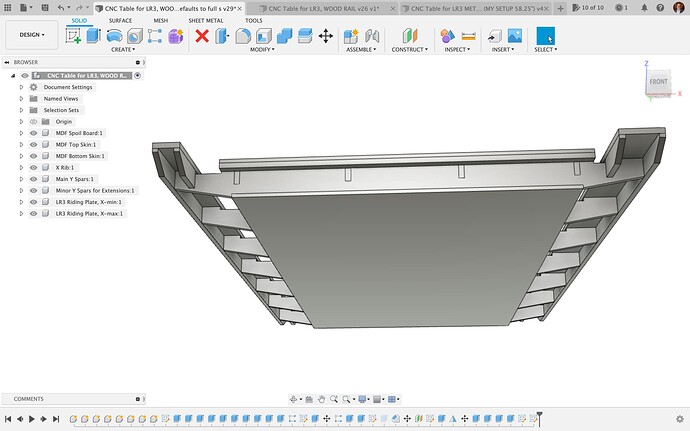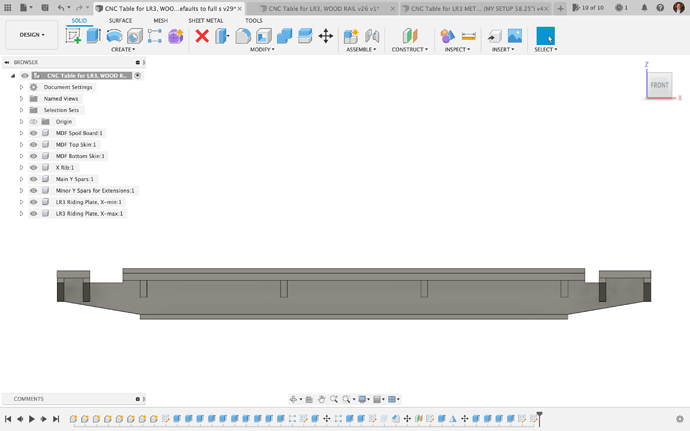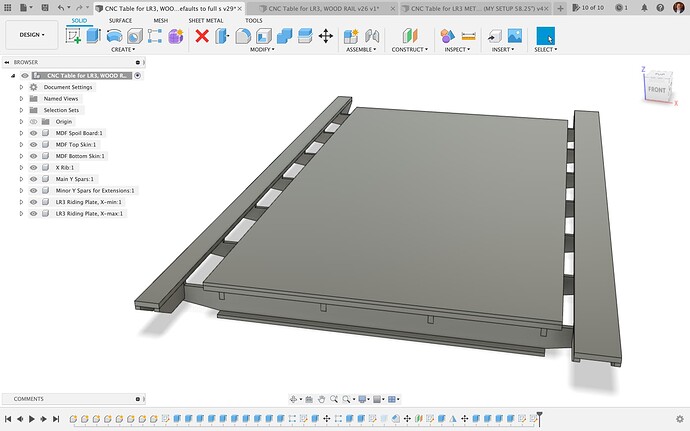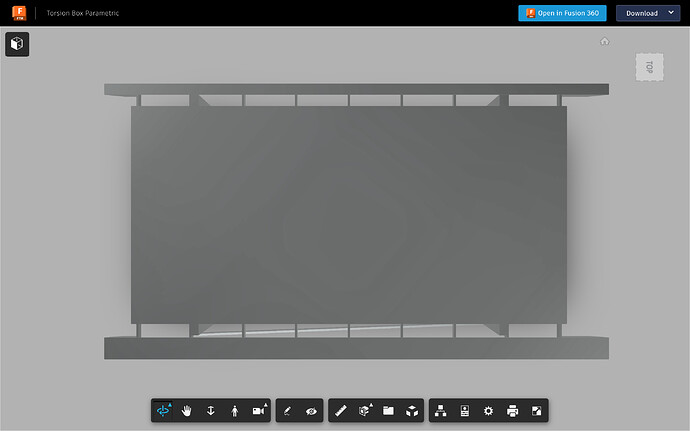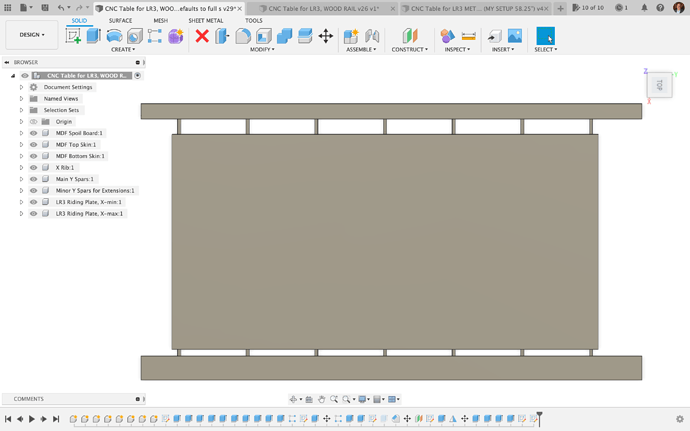Thanks. Got it.
To all:
Merely for purpose of collaboration, input, etc, and in case it helps anyone, here is a link to a viewable online Fusion 360 file of my work today, and I will also attach an exported Fusion Archive file of the work (below).
Update Apr 12, 2023: pics shown below — streamlined version that is doable from a single sheet of plywood (all except the wooden side extension rails), and the Fusion file is updated both for online viewing and the download links I’m sharing.
Click HERE for accessing the following…
DXFs for TABLE WITH WOOD SIDE RAILS:
-
21/32’’ plywood (Slot_Width 0.65625’’ or 16.66875mm)
-
23/32’’ plywood (Slot_Width 0.719’’ or 18.2562mm)
-
~.75’’ plywood (specifically Slot_Width 19.15mm, or 0.75393701’')
DXFs for TABLE WITH METAL STRUT SIDE RAILS:
-
21/32’’ plywood (Slot_Width 0.65625’’ or 16.66875mm)
-
23/32’’ plywood (Slot_Width 0.719’’ or 18.2562mm)
-
~.75’’ plywood (specifically Slot_Width 19.15mm, or 0.75393701’')2
NOTE: Ryan has now released a plan for a table that can also be CNC cut. I took many cues from both his napkin sketch and the table he released today. Here are a couple of overhead screen shots for comparison:
Ryan’s table…
Compared to my table.
